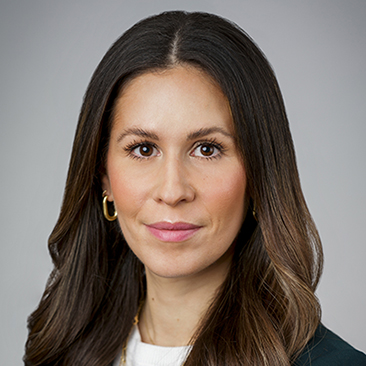In a recent decision by the Second Circuit, Lucas v. Dynegy Inc. (In re Dynegy, Inc.), No. 13-2581 (2d. Cir. Oct. 31, 2014), the court held that a class representative of a district court securities litigation against a chapter 11 debtor had no authority to act on behalf of the class in the debtor’s bankruptcy proceedings, in this case by objecting to the debtor’s plan and opting out of certain plan releases related to such litigation. Why? Because the class representative failed to invoke Rule 23 of the Federal Rules of Civil Procedure (the “Federal Rules”) and seek class certification by the Bankruptcy Court for the Southern District of New York (the “Bankruptcy Court”). In sum, the Second Circuit affirmed the ol’ saying, “No representation without designation”— defining the outer limits of a class representative’s powers in the context of a bankruptcy proceeding and underscoring the importance of following proper procedures.
Background
In March 2012, a securities class action was commenced in the United States District Court for the Southern District of New York (the “District Court”) against, among others, Dynegy Inc. (“Dynegy”), alleging dissemination of false and misleading information and failure to disclose material facts about Dynegy’s financial performance and prospects in violation of securities laws. Thereafter, Dynegy filed for chapter 11 relief in the Bankruptcy Court. Dynegy’s plan of reorganization contained a release of certain non-debtor third parties from liability that precluded litigation against those third parties. The release was binding on all parties unless a party affirmatively opted out.
On July 13, 2012, the District Court appointed Stephen Lucas as “lead plaintiff” in the securities class action. Soon thereafter, Lucas requested that the District Court expand his role as lead plaintiff to allow Lucas to represent the class in Dynegy’s bankruptcy proceedings. The court denied the request.
Bankruptcy Court and District Court
On August 24, 2012, Lucas opted out of the Plan release and objected to the Plan on his own behalf and on behalf of the class. The Bankruptcy Court confirmed the Plan and ultimately overruled his objection, holding that he lacked standing both in his individual capacity and on behalf of the class.
Specifically, the Bankruptcy Court held that (i) Lucas could not object to the release because the release did not affect his rights—he had personally opted out and (ii) Lucas lacked authority to represent the class outside of the District Court class action and, thus, could neither opt out of the release nor object to the Plan on behalf the class. To represent the class in the bankruptcy proceedings, Lucas was required to move under Rule 9014 of the Federal Rules of Bankruptcy Procedure (the “Bankruptcy Rules”) to make Federal Rule 23 (providing procedures for class actions) applicable to the bankruptcy case. He did not file such a motion, despite having two months to do so.
Lucas appealed to the District Court on his behalf and on behalf of the class. The District Court affirmed the Bankruptcy Court’s ruling and dismissed the appeal.
Second Circuit
The Second Circuit also affirmed on appeal, holding that Lucas did not have standing to represent the class in the bankruptcy proceeding. Lucas’ main arguments were that (i) his status as lead plaintiff in the District Court class action gave him standing to opt out of or object to the release on behalf of the class in the bankruptcy proceeding, and (ii) as a procedural matter, he was not required to seek class action status in the bankruptcy court to assert such standing.
Rejecting all of Lucas’ arguments, the Second Circuit noted that “[i]t is well-settled that consent to being a member or the representative of a class in one piece of litigation is not tantamount to a blanket consent to any litigation the class counsel may wish to pursue.” Id. at 8 (internal quotation marks omitted). The Second Circuit further clarified that Lucas’ fiduciary obligations as lead plaintiff in the class action did not confer on him the “status of a class representative in the bankruptcy proceeding for a class that has never been designated.” Id. at 9 (internal quotation marks omitted). Indeed, the District Court appointed Lucas as representative of that action and no others, as clarified by the District Court when it refused to expand Lucas’ role as lead plaintiff in the District Court class action to the Dynegy’s bankruptcy proceedings.
The Second Circuit also rejected Lucas’ procedural argument. The court noted that class actions apply in bankruptcy proceedings in two ways (i) automatically in adversary proceedings or (ii) at the discretion of the bankruptcy court in contested matters, upon a Bankruptcy Rule 9014 motion to make Federal Rule 23 apply. Although Lucas argued that the matter at issue was not a “contested matter,” the Second Circuit found that the proceeding did not fit within any of the categories of adversary proceedings set forth in Bankruptcy Rule 7001 (providing an exhaustive list of the various categories of adversary proceedings). As all proceedings in bankruptcy are either adversary proceedings or contested matters, the Second Circuit held that the matter at issue was a contested matter and, thus, Lucas could not represent a class that was never designated by the Bankruptcy Court.
Conclusion
In Dynegy, the Second Circuit highlighted the outer limits of a class representative’s powers in a bankruptcy proceeding, teaching all practitioners a few lessons on how to avoid the potential forfeiture of legal rights. First, procedures matter (as they always have). Know the law and seek to protect your rights as soon as possible. Second, a class representative in one litigation does not automatically become the class representative in a contested matter in a related bankruptcy proceeding. You must file a motion under Federal Rule 23 for class certification. But, if you remember nothing else, just remember this: No representation without designation.
Contributor(s)





















